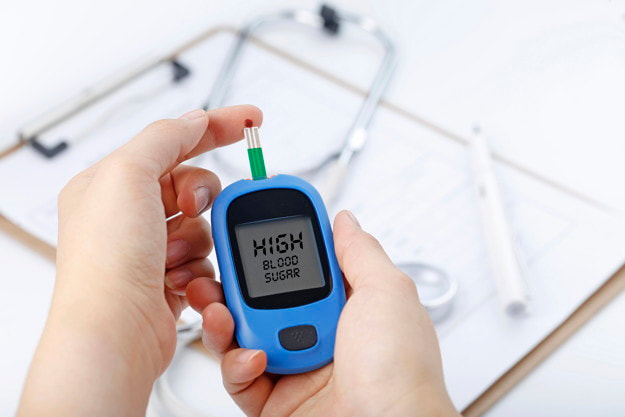 Most runners believe that in order to be better-performing and faster-running machines, they simply need to run more and hone their craft by following a well-designed running program. But, that's only half true. The other piece of the puzzle comes from a structured resistance-training program. Even if a runner wants to improve their running time at the middle or long distances, strength training is a must to improve. How does strength training help? The main reason is to improve our running economy Running economy basically means that you are more efficient and able to undertake the same distance in less time and with less energy. There are heaps of studies showing improvements in running economy and that even in trained distance runners that running economy can improve by up to 8% following a period of resistance training. So for a serious runner who undertakes marathons, 8% off of a 4 hour marathon is 20 minutes, so a pretty good improvement - even shaving 10 minutes off a marathon would make most runners pretty happy! There is a second train of thought that strength training also decreases our injury risk. However there are inconsistent findings in the literature on associations between lower body strength and running injury occurrence. So the main reason to strength train is to improve our running economy. What does a typical program that a runner should undertake look like?
What are some examples of exercises people can do at home? An example gym program for runners might include exercises like:
Power work is also beneficial to improving running economy:
Check out a few strength training exercises here: Lisa Parkinson Accredited Exercise Physiologist
0 Comments
 What is diabetes? Diabetes is a metabolic condition which results in an elevated fasting blood glucose level due to either a defect of our body to produce the hormone insulin, or an inability of our body to use insulin. Why is insulin important, what does it do? Insulin is a hormone that allows our bodies to use the glucose from the food that we eat for energy, and it also acts like a key that unlocks cells and allows glucose to be stored for future use. Without insulin working well, the glucose from food remains in our blood and our blood glucose levels rise to a high level. This is not normal for our bodies. When left untreated this can cause a number of consequences to our health including blindness, nerve damage, limb amputation, kidney failure, heart attack, stroke, and even death. How common is diabetes? It’s estimated that around 1.7 million Australians are living with diabetes, with one person being diagnosed every 5 minutes, and it contributes to around 11% of deaths in Australia. What are the different types of diabetes There are a number of different types of diabetes, with the most common being type 1 and type 2 diabetes Type 1 diabetes is an autoimmune disease and is commonly diagnosed in children and young adults. Type 2 diabetes is the more common form of diabetes, affecting 85-90% of all people with diabetes. While it usually affects older adults, more and more young people, even children, are developing type 2 diabetes. Unlike type 1 diabetes, your risk of developing type 2 diabetes is strongly associated with lifestyle factors such as high blood pressure, overweight or obesity, insufficient physical activity and a poor diet. How can exercise help to prevent type 2 diabetes? No one knows exactly what causes type 2 diabetes, but lifestyle factors, such as being overweight and being inactive, strongly increase your risk. Statistics show that 53% of the diabetes burden is due to overweight and obesity alone. Increasing your exercise and physical activity levels is an easy way to help reduce your risk! Can exercise help people living with type 2 diabetes? Yes it certainly can. Although there is no known cure for diabetes, exercise can be a powerful tool for managing this condition. Exercise helps to:
How much exercise is recommended? The actual dose of exercise that is recommended to prevent and to assist in managing type 2 diabetes is to accumulate 2 and a half hours of moderate intensity exercise across the week, or half that amount of high intensity exercise, in addition to 2 strength training sessions. The strength training exercises should aim to target the major muscle groups within the body.
It’s important to monitor blood glucose levels, particularly for people on insulin, before, during and after an exercise session, and it is also important to wear good supportive footwear and to check feet for problems each exercise session. Lisa Parkinson Accredited Exercise Physiologist/Diabetes Educator #Type2Diabetes  It has been a very different year in regard to local community sports and how/ if they are running due to COVID-19 restrictions. It is great to see some sports happening again and bringing with it many positive benefits for our physical, mental and over wellbeing. Although the preparation for this year’s winter sports has not ran as usual and as a result meant players physical fitness and condition may not be quite up to scratch. When the game day and training demands are much higher than a player’s current physical capacity are not quite meeting up it can increase the likelihood of injury significantly. This can be due to pushing your body harder that it is capable of at that point of time, placing increased stress on each of your body systems. Why is injury more likely? It’s no secret that the first few games of any sporting season usually make you feel more fatigued than usual and this is largely due to the body not being accustomed to the high degree of sport specific demands that are placed on the body. Weather it is the high contact nature of football or the short sharp bursts of speed needed in hockey, the body takes a little while to re-adjust to sport when you first get back into it. The difference in regard to the 2020 sporting seasons is that as structured trainings during the pre-season have not been able to occur as much, your body has not had the time to prepare adequately. If you are a player who relies heavily on building your fitness level during structured training sessions and complete little extra independently at home, you may have put yourself at a higher risk of injury due to a lack of preparation. For those not competing in elite level sport and not training regularly in the off season it is normal for declines in muscular strength, endurance and general conditioning to occur. This is then built up again over the off season, conditioning the body for competition intensity and loads. When this conditioning has not occurred the risk of injury increases as the body tries to complete more than it can handle. Depending on the sport and the specific movement patterns, different areas of the body are more susceptible to injury. For example, footballers are more likely to have a knee or lower limb muscle tear whereas netballers are more inclined to experience ankle and knee joint related issues. Ways to help outside of game day? So how can you help to prevent injuries and prepare yourself for sport?
How to help on game day?
I know we are all loving having sport back on in the community and we hope that you are too. Try implementing a few of these tips to help you stay in the game all season! By Aleisha Michael Accredited Exercise Physiologist  The Hamstring muscle group, often referred to as the “hammie” is often associated with sports injuries like muscle tears, BUT.. they could be causing a lot more than just that. What make up the Hamstring? The hamstring muscle group is not as strong as it’s quadricep counterpart, but they are pretty crucial in our ability to move. The group is made up of 3 individual muscles that sit under the back of your thigh, Semitendinosus, Semimembranosus and Biceps femoris. They all cross two joints, the hip and the knee meaning that they can produce hip extension by bringing the leg back behind you or knee flexion by bending the knee back. How can Hamstring injuries occur? In a normal functioning leg, every action in your quadricep muscles at the front of your leg causes an opposite reaction in the hamstrings at the back of your leg. These two muscles work very closely together to allow you to move both your hip and knee joints and stabilise the pelvis. While it is normal and expected for the quadriceps muscles to be stronger than the hamstrings it is important to have a correct balance of strength in both groups. When there is a strength imbalance between the two the hamstrings may be too weak to support the actions of the quadriceps. This imbalance can often be caused by sitting and running and when an imbalance does occur it can cause problems such as lower back pain and an increased risk of hamstring strains or tears to occur. What can weak hamstring’s cause? When the hamstring muscles are weak it causes additional load and stress to be placed on it’s surrounding muscle groups, as the hamstrings aren’t able to handle higher loads or intensities. This can result in overuse strains or injuries to occur in the gluteal muscles, the quadriceps and even the lower back. What can tight hamstring’s cause? Tight and inflexible hamstrings can often be a contributor to lower back pain. This can happen through tight and constantly contracted hamstrings putting additional stress on the hips and pelvis. This causes the pelvis to tilt back, which subsequentially places added tension and pressure onto the spine and vertebrae. When prolonged periods of tightness occur muscles spasms and strains in the lower back can begin to occur consistently. Hamstring tightness can also cause patella-femoral pain syndrome which basically causes an increased strain between the kneecap and thigh bone. How to prevent Hamstring injuries or tightness:
By Aleisha Michael Accredited Exercise Physiologist |
AuthorSLisa Parkinson Archives
July 2024
Categories
All
|

 RSS Feed
RSS Feed